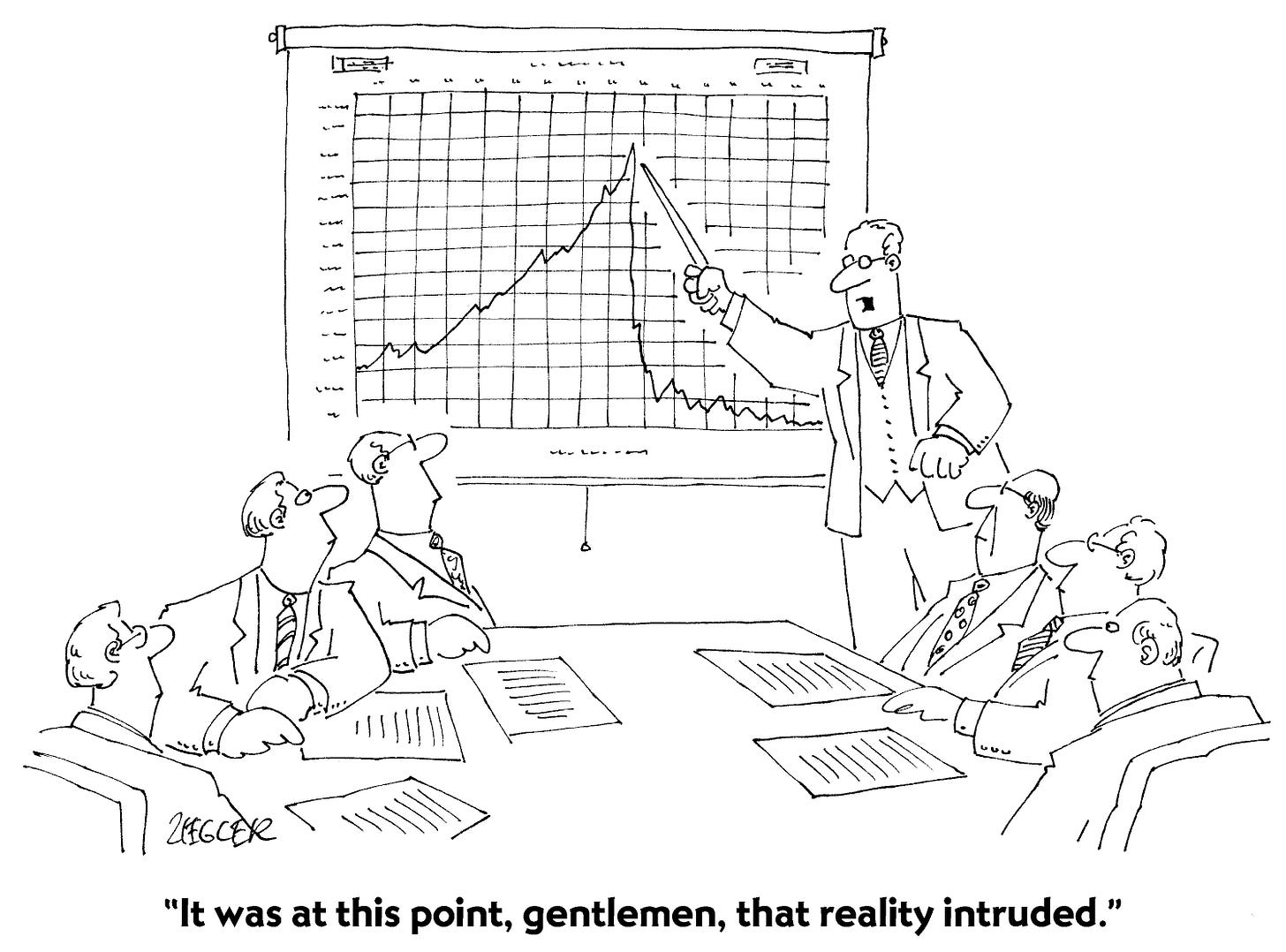The Destructive Effect of AI on Agency Fees if Man-Hour Billing Continues: A Case for Changing Agency Remuneration
A creative agency office has its Scope of Work modeled conservatively. AI takes 24% out of agency fees.
Credit: Jack Ziegler, The New Yorker, The Cartoon Bank
A major holding company creative agency asked us to evaluate the Scopes of Work in one of its big-city offices. Here are the results — before we modeled the likely future effect of AI on their staffing and fees:
Traditional Modeling
Current income: $61.7 milllion from 12 major clients.
Current client staffing: 218 full-time equivalents (FTEs), of which 84 creatives, 67 client service, 17 strategic planners and 50 production people.
Average billing rate per hour: $157.50 per hour, or $283,500 in fees per FTE.
Number of creative deliverables: 13,578 deliverables, equivalent to 420 ScopeMetric® Units (SMUs) of work. One SMU is roughly the size of a typical TV origination spot. Every deliverable in a SOW has a unique SMU value. The SMU is a measure of the relative “size” of each deliverable.
The number of “original” deliverables: 2,601 originations, requiring 47 creatives (55 originations per creative, or 1.1 originations per week per creative). 2,601 originations = 235 ScopeMetric® Units (SMUs) of work.
The number of “adaptation” deliverables: 10,977 adaptations, requiring 37 creatives (297 deliverables per creative, or 5.7 adaptations per week per creative). 10,977 originations = 185 ScopeMetric® Units (SMUs) of work.
Price per ScopeMetric® Unit: $146,990 (think of this as “price per kilo” for the SOW).
Average creative productivity: 5.0 SMUs per year, before AI.
AI Modeling
We modeled the same SOW, assuming that all of the adaptations would be completed by AI with highly productive help from the creatives. AI, then, would complete 10,977 adaptations (185 SMUS), but at an average creative productivity level of 25 SMUs per year rather than 5 SMUs per year — conservatively, a 5-fold improvement in creative productivity. These adaptations would require only 7.4 creatives rather than 37 creatives, a savings of 29.6 creatives.
We modeled the same SOW, but we assumed that all of the originations would be completed by AI at a creative productivity rate of 10 SMUs per year rather than 5 SMUs per year — conservatively, a doubling of creative productivity. These originations would require 23.5 creatives rather than 47, a savings of 23.5 creatives.
Conclusion
AI would, on our conservative assumptions, reduce creative staffing and total staffing by 53.1 creatives, or about $15 million in fees if man-hour billing continues and the rest of the staffing remains unchanged. [This latter assumption is questionable, though — surely, AI will also reduce the need for client service, strategic planning and production, but since we cannot yet model the reduction, we’ve left these folks in at current staffing levels.]
A $15 million fee reduction on $61.7 million of fee income is a 24% fee reduction.
How many agencies or holding companies can tolerate fee reductions of this magnitude — assuming that it isn’t even worse than this? WPP has been hammered recently for forecasting a 5% reduction in fees. Our modeling suggests, conservatively, that AI could bring reductions that are 5 times this magnitude within the creative agencies of a holding company.
Recommendations
The time is right for “remuneration based on workloads,” not on man-hours. Price per ScopeMetric® Unit is the correct way to think about future pricing for agencies who implement the ScopeMetric® system to document, measure and negotiate SOWs for fee-setting purposes.
For further information, learn more about ScopeMetrics® at the ScopeMetric® page: (https://farmerandco.com/scope).



If agencies and holding companies do not transform remuneration — walking away from man-hour billing — Procurement will gleefully embrace AI and severely cut agency man-hours and fees. It will take extraordinary leadership by agencies to pull off the change, but their survival depends on it.